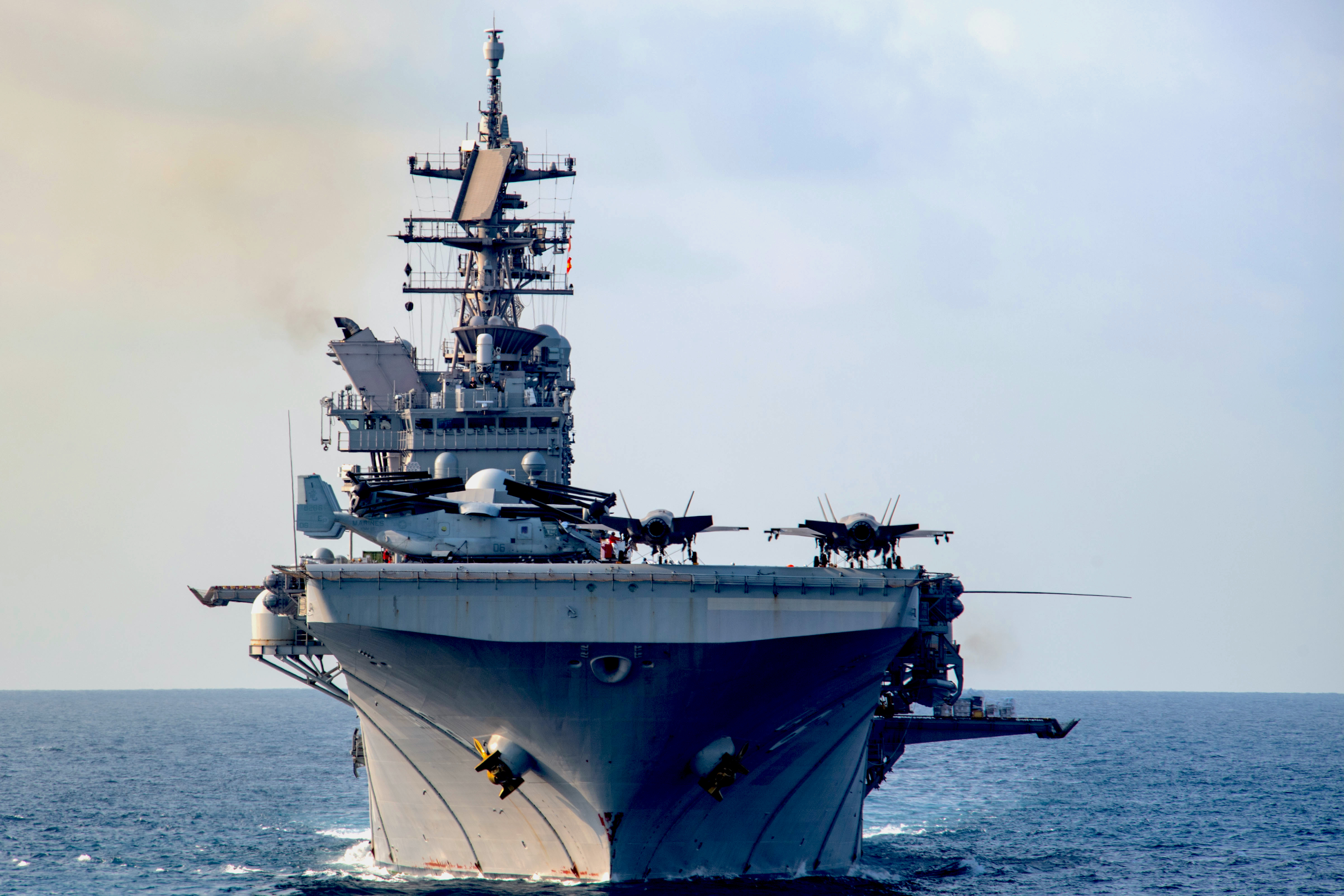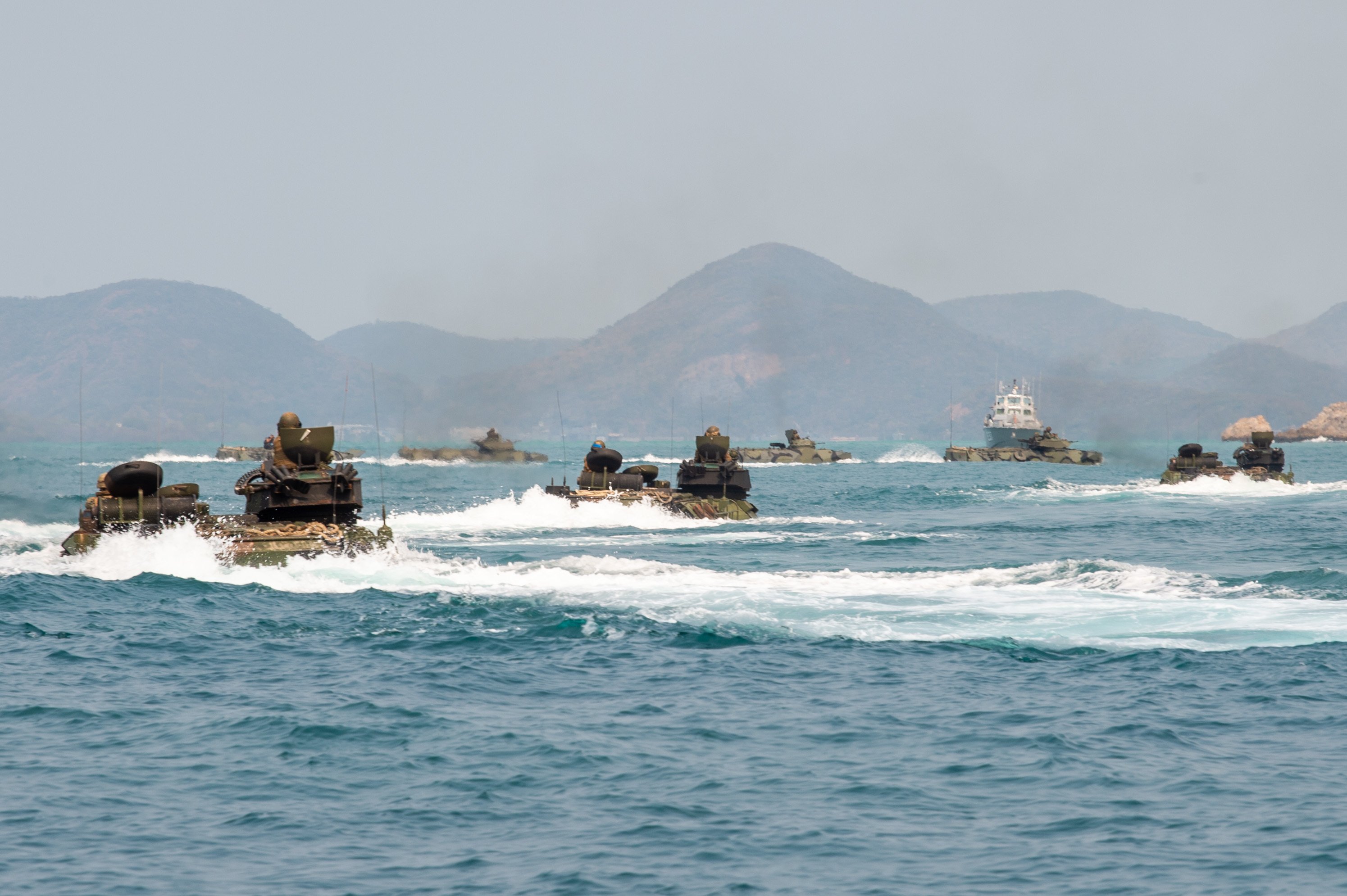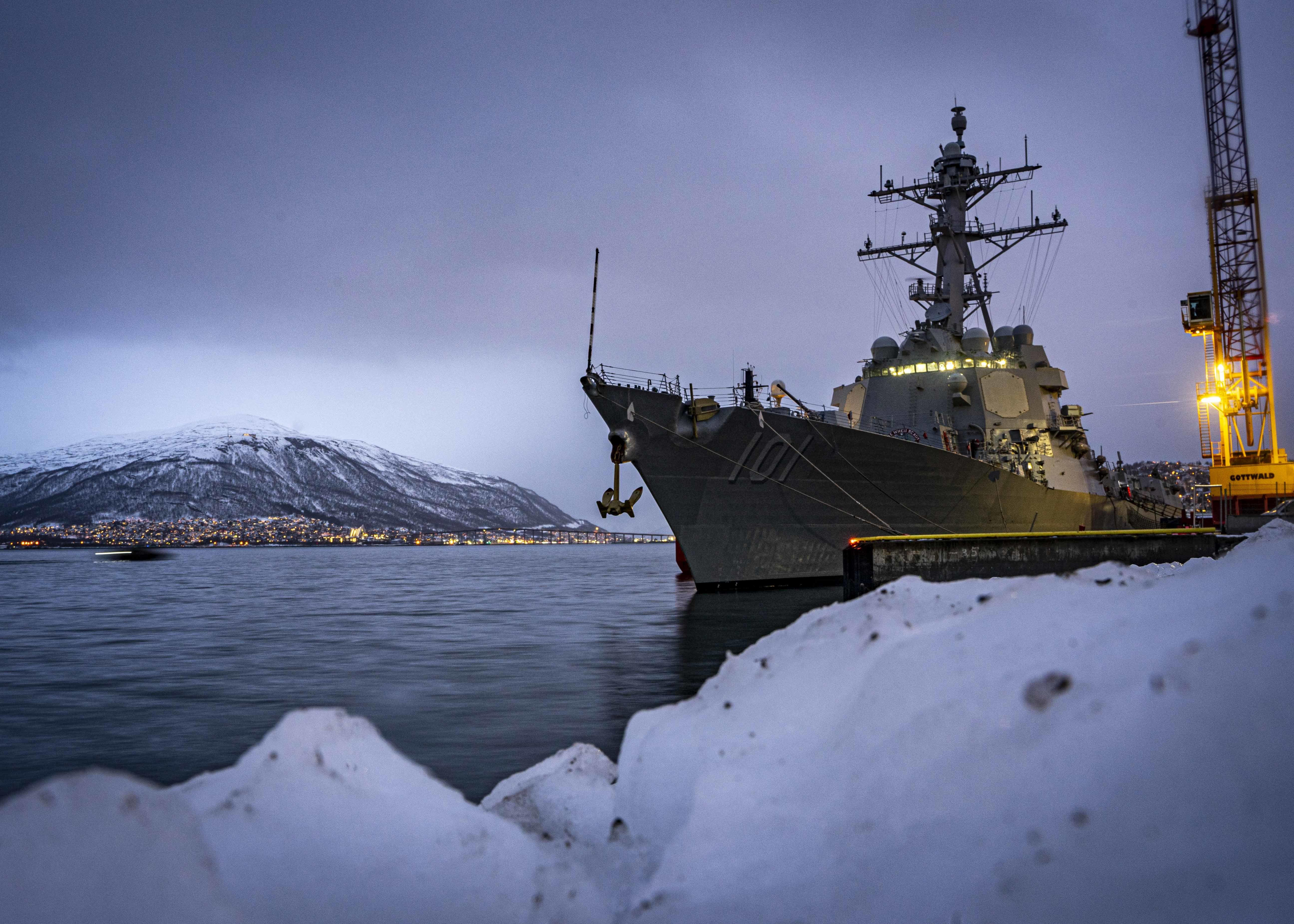
SAN DIEGO, Calif. – The Navy and Marine Corps are caught in a battle with Pentagon leadership over the right force size to aim for and how quickly to try to get there, but the top officers in the sea services insist that everyone is on the same page about maintaining wholeness and readiness as the service grows.
Almost as soon as Marine Corps Commandant Gen. David Berger and Chief of Naval Operations Adm. Mike Gilday took command of their services last July and August, they agreed on the need to conduct a first-ever Integrated Naval Force Structure Assessment to draw out what the future fleet should look like under the National Defense Strategy and to support Distributed Maritime Operations and Expeditionary Advance Base Operations concepts.
That INFSA, which spent months going through simulations and wargames to ensure the uniformed leaders of the sea services were happy with its results, has been put on hold as Defense Secretary Mark Esper ordered more wargames and analysis by outside entities, Gilday said this week at the WEST 2020 event cohosted by the U.S. Naval Institute and AFCEA.
As the future of the fleet remains in flux, Gilday and Berger have spoken about ensuring the future fleet of whatever size it may be is fully manned and maintained.
If the current topline levels remain flat in the coming years as is expected, Gilday said “we can really afford a Navy of between 305 and 310 ships. Right now we’re at 295. So if you want a fleet that’s going to be ready, capable and lethal, you’ve got to make those investments (in manning, maintenance and modernization), rather than a bigger fleet that’s less ready, less capable and less lethal.”
At the same time, civilian leadership is still talking about a buildup of the naval fleet. Acting Navy Secretary Thomas Modly last week previewed the INFSA results, saying the Navy needed a fleet of 390 manned ships and a combined 435 manned and unmanned vessels. He has also committed to reaching a 355-ship fleet – the goal laid out in the 2016 force structure assessment – by 2030 by shifting money from within the Navy’s own budget before asking for a higher topline that is unlikely to come. Esper, too – though without providing the funds to get there – has said he’s “fully committed” to getting the Navy to 355 ships, which is a notion his boss, President Donald Trump, ran on in the 2016 election.
Asked by USNI News during a panel discussion at WEST what the disconnect was between the civilian leaders’ focus on ship count and the uniformed leaders’ focus on wholeness, Berger replied that “there’s no disagreement at all that any growth in the military has to factor in readiness; we’re not going towards a hollow force. Between the military and civilian side, there may have been some different views on that in the past, but that’s pretty rare. If you’re going to have one more of anything, it’s gotta be readiness. No one is headed towards a hollow large force at all.”
“If we’re allowed to grow above the force level that we have right now, it’s got to come with the resources to sustain that over time: the people, the training, the maintenance, the whole package,” Berger added.
Gilday said he’s not focused on the ship count: “we can chase those numbers all day long, and I’m not sure it’s very productive or satisfying.”

But, the Navy is obligated to provide lawmakers with a long-range shipbuilding plan, which lays out the next 30 years of ship construction, delivery and decommissionings in support of a force structure assessment. Gilday said it’s still unclear if the Navy will deliver a Fiscal Year 2021 shipbuilding plan to Congress based on the INFSA sitting in Esper’s office or based on the 2016 FSA that called for 355 ships. The shipbuilding plan is used to inform Congress’ work taking the Navy’s budget request and turning that into an actual spending plan, and it also informs industry decisions on investments in the workforce, shipyards and supply chains to support the Navy’s new construction needs.
“On the shipbuilding plan, the question really is whether it’s going to be informed by the 2016 force structure assessment or whether you use the integrated force structure assessment that we just finished. And so as the secretary of defense said, he wants to take a deeper look at the integrated force structure assessment and then make a decision on whether or not that influences the shipbuilding plan. And so in due time, he’s indicated that when he’s satisfied” with the new round of analysis he ordered, he’ll make a decision on how to proceed with releasing a shipbuilding plan, Gilday said.
Gilday said he stands by the work the Navy and Marines did on the INFSA, saying the rigorous modeling and wargames it went through were based on warfighting scenarios provided by the Joint Staff based on expected threats and environments.
Because there’s so much uncertainty regarding whether Esper will accept the INFSA or not, Gilday said, “what we’re focused on … isn’t necessarily the numbers of platforms, but it’s the capabilities the Navy brings to the fight. We’re part of a joint team, we’re not going to win unless we fight as a joint team. So what unique naval capabilities do we bring to the fight? Think integrated air wing on an aircraft carrier; think about what submarines bring to the fight; or a multi-mission DDG that does [anti-submarine warfare], has long-range strike capabilities and those types of things.”
The CNO said the answer to that question – what is the Navy expected to bring to the fight – would determine how many of what kinds of ships the service needs.

When the INFSA is eventually released, Gilday said, “you will see discrete ships that we’re bringing online. There’s smaller amphibs – they’re connectors, really – to take advantage of the mobility of the Fleet Marine Force and move them to places where they can bring effects, both kinetic and non-kinetic, to help us with both sea control and sea denial.”
Berger agreed: “the trend, clearly: we’re going to need more unmanned. We’re going to need more smaller, lower-signature, capable ships that can fight dispersed. The trend lines are really clear.”
Both service chiefs also acknowledged they’d have to make budgetary sacrifices in this environment to get to that vision.
Gilday explained Modly’s ongoing Stem to Stern budget review that seeks $40 billion in savings over five years, which will be redirected to growing the fleet.
Gilday said the Navy is being asked to “take a deeper look” at its spending and “put everything on the table, challenge our assumptions, and see what money we could shift” towards shipbuilding as well as maintenance, manning and other enablers for a larger force.
On the Marine Corps side, end strength will have to come down to free up funds to invest in the weapons, networks, connectors and other systems to support EABO and DMO operations.
“This is the time when we have to get smaller to get better. If we’re going to actually directly contribute to sea control, sea denial, then we’ve got to have capabilities we don’t have right now. We’ve got to hold at risk naval platforms, a body of water, a piece of littoral terrain – and those are capabilities we don’t have right now but we need to get,” Berger said.
“So rather than hold onto a larger force structure and not be able to make the change, not be able to pivot in the direction we’ve got to go, we’re making a conscious decision” to “contract some,” though Berger said it’s unclear just how much the force will have to shrink to create the funds needed for investing in new modern systems.
“The end result will be a much more capable Marine Corps that maintains the asymmetric advantage that we have to have,” the commandant said.





